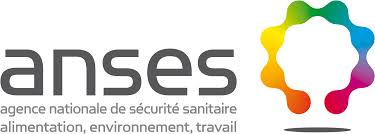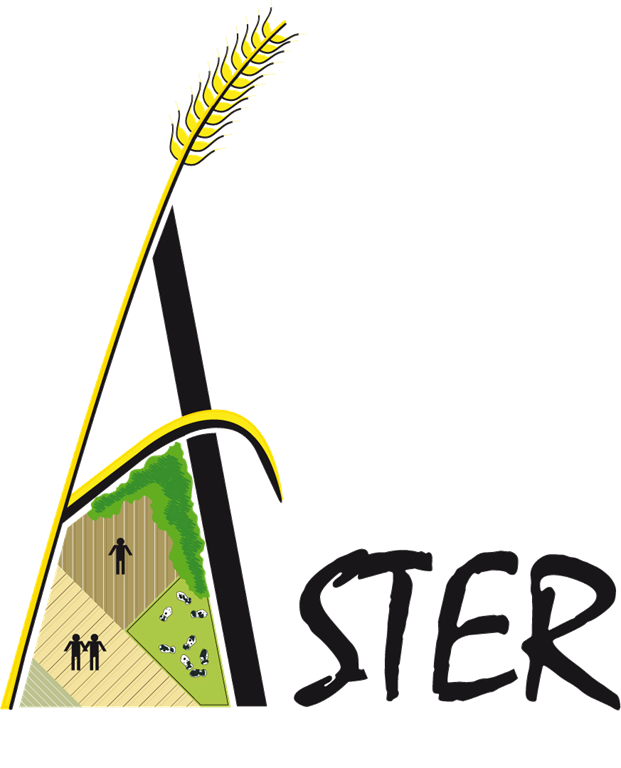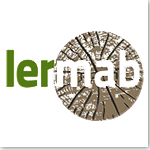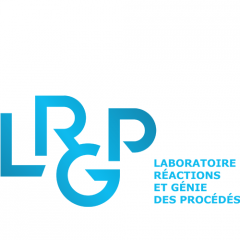ANSeS
Plant Health Laboratory

Presentation
The Mycology Unit of the Plant Health Laboratory carries out research and scientific monitoring activities in the field of plant pathology and more particularly on phytopathogenic fungi and oomycetes.
Global trade in plants increases the risks of introduction and dispersal of phytopathogenic fungi outside their area of origin, with very serious economic and environmental consequences. Indeed, fungi introduced from exotic origins can cause damage often much greater than that caused in their region of origin. International agreements on phytosanitary matters require strict controls of the goods exchanged and a perfect knowledge of the phytosanitary state of one’s own country through monitoring and control plans. This is often based on the taking of samples requiring laboratory identification analyses.
The main mission of the Mycology Unit is to develop and validate specific detection tools for important fungi or oomycetes: officially regulated or included on quarantine lists, emerging in France or in third countries, potentially posing a risk for France. The development of these tools is the subject of peer-reviewed scientific publications in order to make them available to the international community.
Most of the tools developed are based on molecular biology techniques, and the unit aims to develop its detection tools using the real-time PCR technique, which is more efficient and much easier to standardize. Nevertheless, the new possibilities offered by high-throughput sequencing techniques or mass spectrometric analyses are being taken into account and are currently being tested as part of prospective work.
On the other hand, for some of the parasitic fungi and oomycetes that are subject to regulation or are emerging, the unit contributes to genetic characterization studies at the inter or intra specific level.
Contact details
Mycology Unit
Director : Renaud IOOS
Laboratory website : https://www.anses.fr/fr/activit%C3%A9-laboratoire/mycologie
ANSES
Domaine de Pixérécourt
54220 Malzeville
AsTeR
Agrosystem Research Unit Resource Territory

Presentation
Mission and objectives
The ASTER-Mirecourt research unit, located in the Vosges plain, has a project focused on the relations between agriculture and territories. Its work aims to produce knowledge, methods and devices to accompany the transformations of agricultural socio-technical systems and, more broadly, of rural territories, towards greater sustainability by promoting autonomous, environmentally friendly and job-creating agriculture.
The unit is made up of a multidisciplinary team of about 20 INRAE staff (scientific and technical personnel) and each year welcomes several contract engineers and trainees. It has a 240-hectare Experimental Facility for mixed farming, livestock farming and organic agriculture, on which an open innovation system (living-lab) has been built since 2016. A localized agri-food system based on the principles of agro-ecology, and, in particular, on a strong diversification of plant and animal production, with the aim of producing healthy and sustainable food for local populations, is thus gradually being set up.
Researches
ASTER’s work approaches the territory from a double perspective: by the actors and individual or collective dynamics, and by agricultural activities and their imprint on it. Thess researches are carried out on spatial scales ranging from farms to more encompassing territories (watersheds, regions), and on temporal scales ranging from the observation of the change that is taking place to diachronic studies over a few decades.
The unit’s work mainly involves :
– step-by-step design and evaluation of the agricultural system on the experimental facility;
– the mobilization of databases and surveys to analyze spatialized evolutions of agricultural and food systems in meso to macro territories;
– approaches to support stakeholders engaged in ecological transitions in their territories.
Contact details
INRAE research team : 0055
Director : Fabienne BARATAUD
ASTER
662 Avenue Louis Buffet
88500 Mirecourt
BETA
Forest Economics Laboratory

Presentation
The Unit brings together INRAE economics researchers, AgroParisTech lecturer-researchers, and engineers, technicians and administrative staff, all located at the AgroParisTech Centre in Nancy.
BETA is a joint research unit created in 2000 between the Institut National de la Recherche Agronomique (INRA) and the Ecole Nationale du Génie Rural, des Eaux et des Forêts (ENGREF). The objective of BETA is to design, develop and transfer methods and tools for economic analysis in order to understand and improve the knowledge, management and use of forest goods, services and products.
The BETA aims to respond to different missions:
- A mission of theoretical and applied scientific production mainly in the forestry field
- A mission of knowledge transfer.
Contact details
Joint Research Unit (UMR 7522) between the University of Strasbourg, CNRS, the University of Lorraine, INRAE and AgroParisTech
Director: Serge GARCIA (DR)
Lab’s website: https://www6.nancy.inra.frhttp://www.beta-umr7522.fr/-Le-BETA-/lef
BETA
14 Rue Girardet – CS14216
54042 Nancy Cedex
CiTheFor
Therapeutic targets formulation and preclinical drug expertise

Presentation
EA 3452 is a multidisciplinary single-team unit (pharmacology, cell biology, chemistry, galenic pharmacy) whose research activity is centred around the Pharmaceutical Sciences on a single theme “Innovative nitrogen monoxide donor molecules and nanoformulations for vascular use”, with potential clinical applications.
The CITHEFOR unit essentially works on the formulation of fragile molecules of therapeutic interest with a view to improving their oral and systemic bioavailability.
Their current line of research concerns S-nitrosothiols or thionitrites as nitric oxide donors for cardiovascular and cerebrovascular purposes.
They evaluate the molecules in the preclinical phase using models of intestinal permeability and vascular pathologies (ex vivo, in vivo).
People
Hospitality team (EA) 3452
Doctoral School(s) of Attachment :
UL (BMS pole)
- PR : 7
- MCF : 8
- BIATSS : 5
- Doctoral students : 6
Contact details
Hospitality team (EA) 3452
Doctoral School(s) of Attachment :
UL (BMS pole)
Director : Ariane BOUDIER
ariane.boudier@univ-lorraine.fr
Administrative managers :Pascale CARNET
pascale.carnet@univ-lorraine.fr
Nathalie DEGOUSEE
nathalie.degousee@univ-lorraine.fr
Laboratory website : http://cithefor.univ-lorraine.fr/fr
Faculté de Pharmacie
CITHEFOR EA 3452
5 rue Albert Lebrun – BP 80403
F-54001 Nancy Cedex
Le secrétariat de l’unité de recherche est situé
dans le 3ème hall, escalier C, 1er étage à gauche.
CRM²
Crystallography, Magnetic Resonance and Modeling Laboratory

Presentation
The main scientific aim is to to develop original and complementary methods and instruments for the study of the structure and dynamics of molecular and biomolecular materials in order to understand structure-property and structure-function relationships.
Contact details
Joint Research Unit UMR CNRS UL 7036
Director : Dominik SCHANIEL
dominik.schaniel@univ-lorraine.fr
Laboratory website :
http://crm2.univ-lorraine.fr/lab/en/
Université de Lorraine
Faculté des Sciences et Technologies
Boulevard des Aiguillettes
Bâtiment Géologie entrée 3B 70239
54506 Vandoeuvre-lès-Nancy cedex
L2CM
Lorrain Molecular Chemistry Laboratory

Presentation
The L2CM (Laboratoire Lorrain de Chimie Moléculaire) is a CNRS-Université de Lorraine UMR (UMR 7053).
Founded in January 2018 and headed by Philippe Gros (DR1-CNRS), it has a staff of around 60 people spread geographically over Nancy (FST & Pharma) and Metz (ICPM). The L2CM comes from the SRSMC laboratory (Structure and Reactivity of Complex Molecular Systems, UR7565).
The objective of the L2CM is to develop methods for the synthesis of innovative molecules and molecular materials with applications towards physics (catalysis, energy, luminescence) and biology (antibacterials, drug delivery, imaging). The philosophy of the laboratory is the design from the molecule to the bioactive device or system by relying on a set of synthesis and characterization platforms. Research is conducted along two lines:
The HeMaF axis (Heterocycles and Functional Materials)
The MolSyBio axis (Bioactive Molecules and Systems)
Contact details
Joint Research Unit UMR CNRS UL 7053
Doctoral School(s) of Attachment :
Synthesis, Experiments, Simulations, Applications: From Molecules to Supramolecular Buildings (SESAMES)
Director : Philippe GROS
philippe.gros@univ-lorraine.fr
Managers :
The axis HeMaF Corinne COMOY (MCF-UL)
corinne.comoy@univ-lorraine.fr
The axis MolSyBio Andreea PASC (MCF-UL)
andreea.pasc@univ-lorraine.fr
Head of Scientific Animation and Communication : Rosella SPINA
rosella.spina@univ-lorraine.fr
Contact : l2cm-contact@univ-lorraine.fr
Laboratory websites :
http://www.l2cm.univ-lorraine.fr/l2cm/
http://www.univ-lorraine.fr/content/poles-scientifiques-federations-et-laboratoires-de-recherche
L2CM UMR 7053
Université de Lorraine
Boulevard des Aiguillettes BP 239
54506 Vandoeuvre les Nancy
LERMaB
Laboratory for Study and Research on Wood Materials

Presentation
It is located on two main sites, in Vandoeuvre within the Faculty of Science and Technology, and in Epinal within the Ecole Nationale Supérieure des Technologies et Industries du Bois, as well as on a more occasional basis at the IUT of Longwy and Epinal. Relying on various scientific skills such as biology, chemistry, process engineering, physics, mechanics and civil engineering, the laboratory develops research in relation to wood and natural fibres, from the molecular to the macroscopic level of the material and even wood structures. The laboratory’s activities structured around the material wood are divided into three main lines of research in which each LERMAB teacher-researcher is involved according to his or her skills and initial training.
Material and Processes” axis
Chemical, Energy and Process Development” axis
Energy, Mechanics, Wood Construction” axis
The “Material and Processes” axis
It aims to improve the performance of wood and wood-based materials by focusing in particular on the various treatments or processes that optimise their properties, but also on basic knowledge of the materials in order to promote their use. The research themes within this axis concern not only the basic knowledge of the material (anatomy, natural durability, etc.), but also its treatment and transformation processes such as adhesion, gluing, welding, finishes, preservation, drying, chemical and thermal modifications, and wood- or fibre-based composite materials.
The “Chemical, Energy and Process Development” axis
In the context of the Grenelle Environment Round Table, it aims to replace part of fossil fuels with renewable resources. The common point of the research carried out in this area concerns the use of ligno-cellulosic biomass for applications in the fields of energy and chemistry. The research topics included in this area concern biorefinery, the development of synthons for chemistry, the synthesis of biosourced molecules (surfactants, solvents, etc.), the chemical use of extractives, energy production by dry methods (combustion, gasification and pyrolysis) and by wet methods (liquefaction, biomethanol, etc.).
The “Energy, Mechanics, Wood Construction” axis
It brings together research activities related to the use of wood. Within this framework, the themes developed concern not only the manufacture of manufactured products and in particular wood-based structures, but more generally eco-construction, including both aspects related to the use of wood and those related to the energy efficiency of buildings. The research topics within this axis concern manufacturing and production, the mechanics of assemblies and structures, coupled heat and mass transfer in envelopes, energy efficiency, air quality and comfort in buildings. All these topics are addressed under the experimental and modelling aspect.
Contact details
UL/UHP Joint Research Unit EA 4370
Director : Philippe GERARDIN (PR)
philippe.gerardin@univ-lorraine.fr
Laboratory website : http://lermab.univ-lorraine.fr/
LERMAB
Université de Lorraine
Faculté des Sciences et technologies
54506 Vandoeuvre-lés-Nancy
LRGP
Reactions and Process Engineering Laboratory

Presentation
With nearly 300 people, the LRGP develops the scientific and technological knowledge necessary for the design, study, management and optimization of complex physico-chemical and biological processes for the transformation of matter and energy. This site in Nancy is ranked 1st French site in the 2017 Shanghai ranking in the field of process engineering.
A new joint laboratory was inaugurated this Tuesday, October 10, on the ENSIC site between Air Liquide and the Reactions and Process Engineering Laboratory of Nancy – LRGP (joint research unit between the CNRS and the University of Lorraine). These two entities have joined forces to create a joint laboratory whose research focuses on the development of new technologies in the field of energy and, in particular, the production and exploitation of gases.
Contact details
CNRS Unit
UMR 7274
Director : Laurent FALK
laurent.falk@univ-lorraine.fr
Laboratory website : http://lrgp-nancy.cnrs.fr/
SITE PLATEFORME SCIENCES DU VIVANT ET SANTE
13 Rue du bois de la champelle
54500 Vandoeuvre-lès-Nancy – France
SITE ENSAIA
2 Avenue de la forêt de Haye
TSA 40602
54518 Vandoeuvre-lès-Nancy – France
SITE ENSIC
1 Rue Grandville
BP 20451
54001 Nancy Cedex – France



